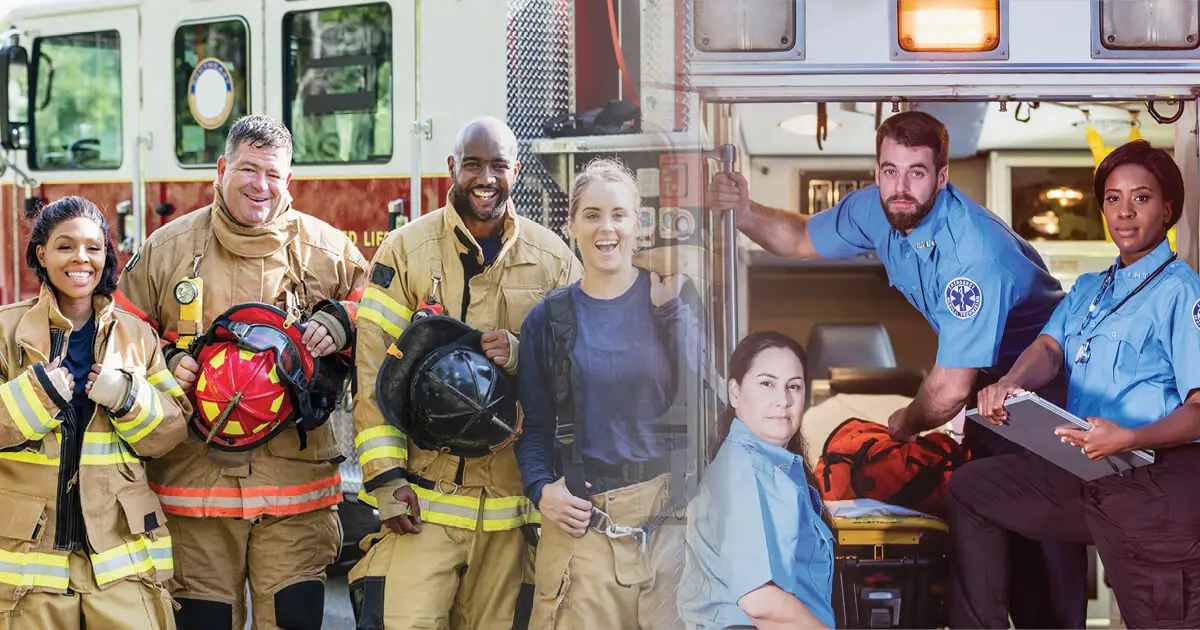The Importance of Peer Support When Training First Responders

On the night of April 18, 2013, Massachusetts Institute of Technology Police Officer Sean Collier was shot and killed by the Tsarnaev brothers, the two individuals who would later be found guilty of the Boston Marathon Bombing. Three years later, Collier’s family appealed to Congress to create a National First Responders Day, which was instituted for the first time, in his honor, on Oct. 28, 2017.
Each year on Oct. 28, we acknowledge the critical and often dangerous work of first responders. First responders come from a variety of disciplines: EMTs, police, firefighters and other emergency professionals all take responsibility to respond to an scene while an emergency is in progress.
These individuals are often highly skilled, and their training is paramount to their ability to control a scene and, ultimately, save lives. Read on to learn more about first responders, the nature of their work, and how proper training and education through peer support can help first responders not just at the scene, but aid them in their own mental health as well.
First Responders in the United States
First response calls are considered “low-frequency, high-intensity” events. These events can leave lasting impacts on first responders to a scene. Often, they’ll experience anxiety, post-traumatic stress and other negative mental health consequences from taking part in an active scene. Below are a few statistics related to first responders, according to the text of the First Responders Day Act.
- The National Fire Protection Association estimates that there are 1,150,000 either career or volunteer firefighters in the United States.
- The Centers for Disease Control and Prevention (CDC) estimate that there were 240,800 full-time Emergency Management Services (EMS) workers as of 2018, including paramedics and emergency medical technicians.
- According to the Federal Bureau of Investigation’s Criminal Justice Information Services division, there were 670,279 law enforcement officers in the United States as of 2017.
- Since 2010, there have been 670 firefighter deaths in the line of duty, according to the National Fire Protection Association.
- Research from the CDC in 2017 found a 14 percent higher rate of deaths from cancer for firefighters in comparison to the general population.
- A 2018 survey of 7,000 firefighters in New York and California found that 19 percent had experienced suicidal thoughts, and 65 percent are haunted by traumatic situations in the line of duty, highlighting the emotional toll of these essential and lifesaving jobs.
- The mental burden carried by police officers and firefighters is somberly demonstrated by the statistic that, in 2017, there were more firefighter and police officer deaths by suicide than in the line of duty, according to the Ruderman Family Foundation.
- The CDC estimates that 21,200 EMS were treated in emergency rooms for work-related illnesses and injuries in 2017.
This year, the First Responders Children’s Foundation is hosting a public event in NYC to honor EMTs, paramedics, firefighters, public safety officers, nurses, 911 dispatchers, and 9/11 survivors. The event honorees include firefighters in California, Search and Rescue teams from Louisiana, and COVID-19 response EMTs in New York City.
Additionally, businesses are now offering discounts to first responders as a way to honor them and support them.
Why Support from Peers is Key to Training First Responders
A 2022 article in the FBI Law Enforcement Bulletin Peer, “First Responder Peer Support Programs,” authored by a team of psychologists, discusses the “overwhelming need to manage the mental health and psychological well-being of emergency service workers, including police officers, firefighters, emergency medical technicians, correctional officers, and dispatchers.”
Support programs and training materials such as the above-mentioned course help reduce the stigma of mental health issues and help normalize and provide a pathway for peers to support each other as they experience stressors and trauma in their daily work.
According to the Substance Abuse and Mental Health Services Administration, “Peer support can help responders cope, lower stigma, and build team cohesion. Responders understand stressors their peers face as others may not. Peers can model healthy behaviors and share information about sources of support.”
Public Safety Group’s First Responder Support & Resilience course helps first responders learn how to support other first responders and practice talking with coworkers who are going through challenging times. The simulations enable practitioners to learn from conversations and practice responding in a safe environment so they can be prepared to handle difficult situations in the real world. The five simulations cover scenarios that have been known to be present for first responders globally, including post-traumatic stress disorder, major depression, substance abuse, mental health stigma reduction, and seeking help.